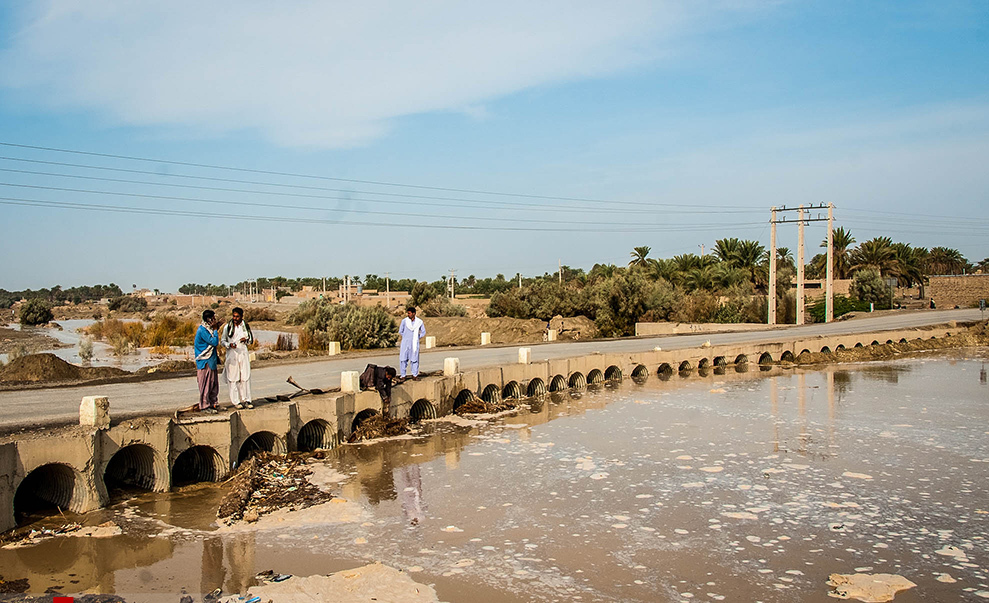Many families in Sistan-Baluchestan Province who were affected by the recent heavy rainfall and floods have lost nearly all their possessions. In times like these, it’s important for relevant government organizations and NGOs to offer immediate financial assistance to help the community recover.
Last week, the government approved $1.2 million (50 billion rials) to compensate for the flood damage in the southeastern province, IRNA reported.
Earlier it was said that non-returnable aid of $1,250 would be given to the people whose homes were damaged; however on Friday, Gholamreza Arbabi, director general of Crisis Management Office at the provincial governorate, said the plan “is still being examined and has not been implemented yet.”
“But, since Feb. 11 loans amounting to $5000 (200 million rials) at 4% interest rate are being given to owners of damaged residential units to help them repair their homes. Owners can visit the Housing Foundation of Islamic Revolution to register for the loan.”
Twenty teams from the foundation are inspecting the condition of damaged homes. Nearly 720 residential units were destroyed and 1,040 sustained 60% damage following heavy rainfall January 19-24 in the province.
More Flooding to Come
“Heavy rainfall may also lead to flooding in the southern and southwestern regions in the coming 2-3 weeks,” warned Majid Habibi Nokhandan, head of the Climatology Research Institute (CRI) in Tehran.
According to the Natural Disaster Management Organization, Iran is one of the most vulnerable countries prone to more than 33 types of natural disasters such as floods, earthquakes, land subsistence, drought, sandstorms, to name a few.
“We must move in the direction of reinforcing existing structures and ensure resourceful crisis management,” said Morteza Akbarpour, head of the organization.
Drought, natural disaster, lack of effective agriculture insurance and improper distribution of facilities, are factors that can worsen poverty levels in the country.
As there is lack of organized insurance policies for natural disasters, when such instances occur, it drives families deeper into poverty. With extreme weather changes on the rise, low-income families are at a greater risk than ever due to their environmental conditions and economic instability.
A devastating 6.6-Richter earthquake in Bam, Kerman Province in 2003 destroyed 90% of all buildings in the city. Fourteen years after the earthquake which left around 26,000 dead, only 95,000 new residential buildings were built by the Housing Foundation of Islamic Revolution for the survivors.
According to the Industrial Development and Renovation Organization of Iran (IDRO), in the capital Tehran alone, 205,000 residential units are in urgent need of retrofitting. Buildings in other cities are in equally bad shape. Official figures show that 30% of the population of 80 million lives in distressed residential units which are vulnerable to natural elements like strong storms, flooding or earthquakes.
IDRO says 8% of all distressed residential units across the country are renovated each year, which means renovation of all the existing units will take 12-13 years, and during the period more buildings are bound to become distressed.


